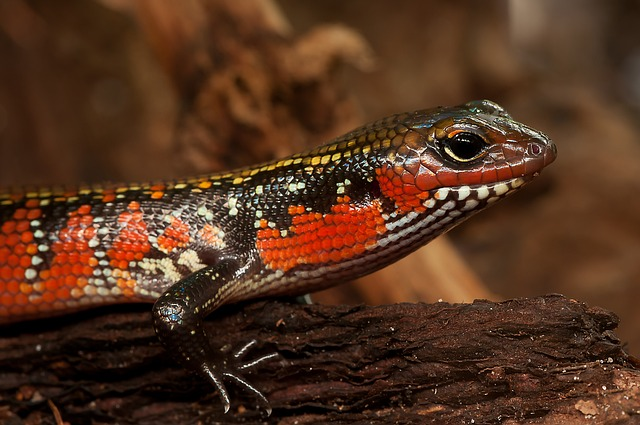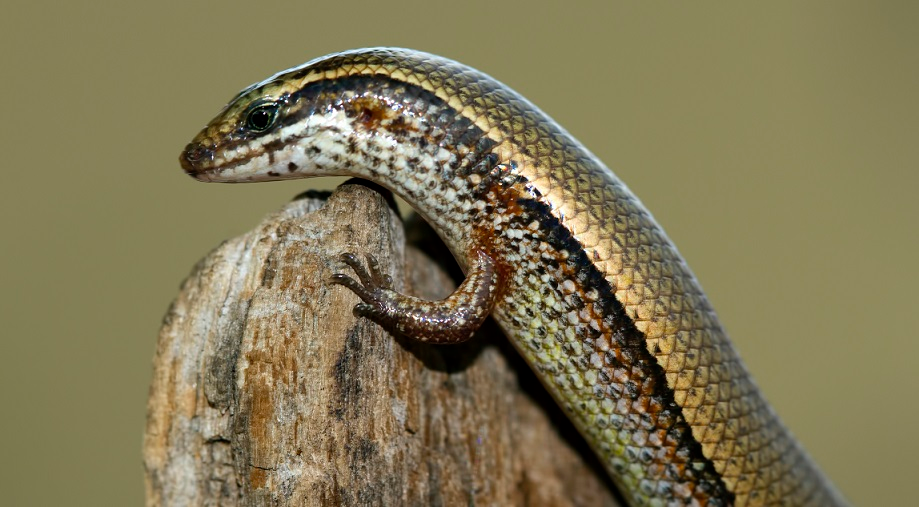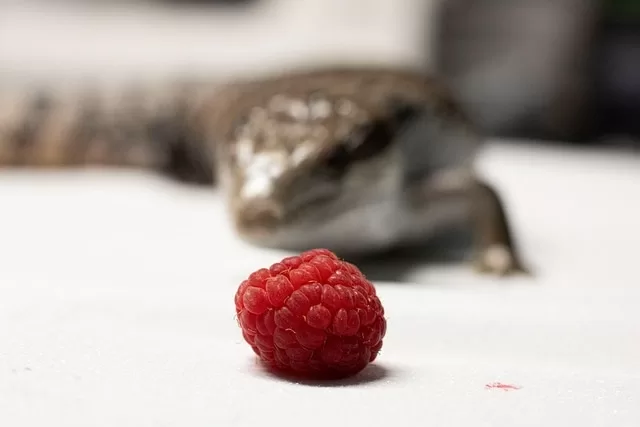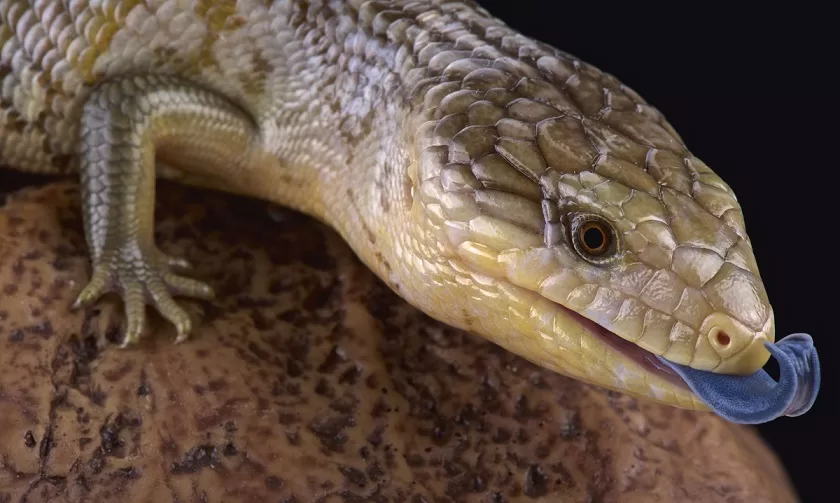If you’re an aspiring pet owner looking for an unconventional and captivating companion, look no further than skinks. These fascinating lizards offer a delightful mix of intriguing behaviors, striking appearances, and manageable care requirements that make them perfect for those seeking a more exotic addition to their home.
The purpose of this article is to provide comprehensive guidance for potential skink owners by delving deep into the world of these remarkable creatures. From understanding the basics of skink biology and behavior to setting up the perfect habitat, this guide covers all aspects of skink care that will help you make an informed decision about owning one.
Whether you’re a beginner in reptile care or an experienced herpetologist, this ultimate guide on all non-tropical and tropical skinks is your one-stop resource for all things skink-related. So, let’s embark on this exciting journey of discovery and learn all there is to know about the wonderful world of skinks.
What is a Skink?

Description
Skinks are small to medium-sized lizards that belong to the family Scincidae. They are characterized by their smooth, shiny scales, streamlined bodies, and short legs, which give them a sleek, serpent-like appearance. Skinks have a wide range of colors and patterns, which often serve as camouflage in their natural habitats. Some species have distinct stripes or markings, while others exhibit more subtle hues or even iridescence.
History
Skinks have a long evolutionary history, with their origins tracing back to the early Jurassic period, approximately 200 million years ago. Over time, skinks have diversified and adapted to a wide range of environments, from forests and grasslands to deserts and even mountainous regions. Skinks have been a part of human culture and folklore in various regions worldwide, often being associated with the sun, fertility, or as symbols of regeneration due to their ability to regenerate lost tails.
Skink Lizard Facts and Physical Characteristics
Appearance

Skinks exhibit a wide range of colors and patterns, making them visually striking pets. Some species have bold stripes or bands, while others may display more subtle hues, intricate markings, or even iridescence. Their smooth, shiny scales contribute to their distinct, polished appearance. Skink heads are often wedge-shaped, with large, alert eyes and a slightly tapered snout. Some species have ear openings, while others possess relatively small legs and ear flaps or lack visible ear openings altogether.
Size
The size of skinks varies significantly depending on the species. Some of the smaller skinks, such as the ground skink (Scincella lateralis), can reach lengths of just 3-5 inches, including their tail. In contrast, larger species like the blue-tongued skink (Tiliqua spp.) and the prehensile-tailed skink (Corucia zebrata) can grow up to 18-32 inches in length. When choosing a skink as a pet, it is essential to consider the adult size of the same species to ensure you can provide adequate space and care.
Unique features
Skinks possess several unique features that set them apart from other lizards. One notable characteristic is their ability to regenerate their tails. When threatened, skinks may detach their tail in a process known as autotomy, allowing them to escape from predators. The tail continues to wriggle, distracting the predator while the skink makes its escape. Over time, the skink will regrow its lost tail again, although the new tail may differ in appearance and length from the original.
Some species of skinks, like the sandfish (Scincus scincus), have specialized scales and an elongated, streamlined body that allow them to “swim” through loose sand. Other species of skinks have evolved reduced or absent limbs, giving them a more serpentine appearance and enabling them to navigate their environments more efficiently.
In addition to these unique physical features, some skink species have developed fascinating behaviors, such as the blue-tongued skink’s iconic threat display, where it opens its mouth wide and exposes its vibrant blue tongue to deter predators. These captivating features make skinks a truly remarkable group of reptiles to observe and care for as pets.
Types of Skink Lizards: A Comprehensive Overview

Popular species for pet owners
Blue-Tongued Skink (Tiliqua spp.):
Blue-tongued skinks are among the most popular skink species kept as pets, thanks to their docile nature and large size. Native to Australia, New Guinea, and Indonesia, these skinks are known for their iconic blue tongue, which they display when threatened. They have a stocky build and can reach lengths of up to 24 inches.
Schneider’s Skink (Eumeces schneideri):
Also known as the Berber Skink, the Schneider’s skinks are native to the Middle East and parts of North Africa. They are medium-sized, reaching lengths of up to 12-16 inches, and have a distinctive black and yellow striped pattern. These hardy lizards are known for their adaptability and make excellent pets for beginners.
Fire Skink (Lepidothyris fernandi):
Fire skinks, also known as African fire skinks, are native to the rainforests of West Africa. These brightly colored lizards can grow up to 15 inches in length and are known for their stunning red, black, and gold coloration. Fire skinks are shy and require careful handling but make rewarding pets for those willing to provide proper care and attention.
Solomon Island Skink (Corucia zebrata):
The Solomon Island skink, also known as the prehensile-tailed skink or monkey-tailed skink, is one of the largest species in the skink family. They can reach lengths of up to 32 inches and are native to the Solomon Islands in the South Pacific. These prehensile tailed skinks have a unique tail, which they use for climbing and grasping branches. These arboreal lizards require a large, well-planted enclosure and are best suited for experienced reptile keepers.
Gold Striped Tree Skink (Lipinia pulchella):
The Gold Striped Tree Skink is a slender lizard native to Southeast Asia. They are characterized by their greenish-brown coloration with contrasting gold longitudinal stripes running down their bodies. As their name suggests, these skinks are arboreal, meaning they spend most of their time in trees. The Gold Striped Tree Skink requires a vertical enclosure with ample climbing opportunities, and while they may not be as commonly kept as other kinds of exotic pets, they can be an interesting choice for enthusiasts looking to care for a more unusual skink species.

Olive Tree Skink (Dasia olivacea):
The Olive Tree Skink is a medium-sized, arboreal skink species native to Southeast Asia. They are characterized by their smooth, olive-green coloration and are known to inhabit trees and bushes in their natural environment. The Olive Tree Skink requires a vertical enclosure with plenty of climbing opportunities, such as branches and plants. While they may not be as widespread among pet owners as other skink species, these captivating lizards present an appealing option for reptile aficionados seeking to care for a more uncommon tree-dwelling skink.
American Five-Lined Skink (Plestiodon fasciatus):
The American Five-Lined Skink, scientifically known as Plestiodon fasciatus, is a small to medium-sized skink native to North America. They are characterized by their distinctive pattern of five light-colored stripes running down their dark bodies, with the stripes fading as they age. The American Five-Lined Skink is often found in wooded areas and grasslands, making them a more familiar sight for those living in the United States. As pets, they can be active and engaging, making them a popular choice for those interested in native skink species.
These are just a few examples of the many skink species that can be kept as pets. When choosing a skink, it’s essential to thoroughly research the specific species’ care requirements to ensure you can provide a suitable environment and diet for your new scaly companion.
Skink Behavior and Lifestyle
General behavior
Skinks are typically shy and secretive creatures, often spending much of their time hiding under rocks, logs, or foliage. They are diurnal, which means they are active during the day and rest at night. Skinks are primarily ground-dwelling, although some species are semi-arboreal and can be found climbing trees or basking on branches. Skinks are generally not aggressive, but when threatened, they may resort to tail autotomy or display warning behaviors such as hissing or puffing up their bodies.
Social interactions
The social behavior of skinks varies depending on the species. Some skinks, like the blue-tongued skink, are mostly solitary and may become territorial, especially during the breeding season. They are best housed individually to avoid stress and potential conflict. Other skink species, such as the Schneider’s skink, can be housed in pairs or small groups, provided there is ample space and hiding spots to prevent territorial disputes. It’s crucial to monitor skinks’ behavior closely when housed together to ensure they are safe from each other.
Can Skinks swim? Dig? Climb trees?
Skinks display a range of behaviors related to their specific habitat and species. While most skinks are not known for their swimming abilities, some species, like the water skink (Eulamprus quoyii), are semi-aquatic and can swim quite well. Many species of skinks, especially ground-dwelling species, are excellent diggers, using their strong limbs and claws to create burrows or tunnels for shelter. Skinks like the Solomon Island skink are adept climbers to navigate tree branches in search of food and basking spots.

Understanding the unique behaviors and lifestyles of skinks is essential when caring for them as pets. Providing an environment that mimics their natural habitat, with opportunities for climbing, digging, or swimming as appropriate for the species, can significantly contribute to their overall health and happiness.
Skink Habitat and Natural Environment
Skink Lizard Locations
Skinks can be found in a wide range of habitats across the globe, from North, Central, and South America to Africa, Asia, and Australia. They inhabit diverse environments such different habitats such as forests, grasslands, deserts, and even mountainous regions. The habitat preferences of skinks vary depending on the species.
For example, the blue-tongued skink is primarily found in the grasslands and woodlands of Australia and hills of Indonesia, while the fire skink inhabits the rainforests of West Africa. Understanding the natural environment of a skink species is crucial for providing a suitable habitat when keeping them as pets. Potential skink owners should research their chosen species’ natural habitat and replicate key elements, such as temperature, humidity, and substrate, within their pet’s enclosure.
Natural predators
Skinks face numerous predators in their natural environments. Common predators include birds of prey, snakes, larger lizards, and various mammals, such as foxes, raccoons, and cats. Skinks have evolved various defense mechanisms to evade predation, such as camouflage, tail autotomy, and threat displays.
In captivity, it is essential to protect pet skinks from potential household predators, like cats and dogs, by ensuring their enclosures are secure and inaccessible to other pets. Additionally, it is crucial to house skinks separately from other reptiles, as larger or more aggressive species may pose a threat to them.
Skink Diet and Feeding Tips
What do Skinks eat?
Skinks have diverse diets depending on their species, with most being insectivorous or omnivorous. Insectivorous skinks primarily consume a variety of insects, such as crickets, roaches, and mealworms. Some larger species, like the blue-tongued skink, have an omnivorous diet, which includes a mix of insects, vegetables, and fruits. For example, blue-tongued skinks may enjoy a diet of crickets, mealworms, leafy greens, and soft fruits like berries or melons. Some skinks may occasionally eat small vertebrates, like rodents or other small lizards too.

Feeding schedule and tips for pet owners
Establish a feeding schedule: Most skinks should be fed regularly, with younger or growing or breeding female skinks often requiring more frequent meals than adults. Juvenile skinks may need to be fed daily, while adult skinks can typically be fed every two to three days.
- Provide a varied diet: Offering a variety of insects and plant matter can help ensure your skink receives the necessary nutrients for optimal health. Rotate between different types of insects and vegetables to keep their diet diverse and interesting. For example, you can alternate between crickets, mealworms, and roaches for an insectivorous skink or include a mix of leafy greens, vegetables, and fruits for an omnivorous species.
- Gut-loading insects: To enhance the nutritional value of feeder insects, “gut-load” them by feeding the insects a nutrient-rich diet 24-48 hours before offering them to your skink. This ensures that your skink gets the maximum nutritional benefit from its prey.
- Dusting with supplements: To ensure proper calcium and vitamin intake, dust feeder insects with a calcium supplement before feeding them to your skink. Additionally, provide a multivitamin supplement once or twice a week to help maintain overall health.
- Monitor weight and growth: Regularly observing your skink’s weight and growth can help identify any potential dietary issues early on. If you notice significant weight loss or stunted growth, consult an experienced pet owner or reptile veterinarian for guidance on adjusting your skink’s diet.
By providing a well-balanced and varied diet, as well as adhering to an appropriate feeding schedule, skink owners can ensure their pets receive the necessary nutrients for optimal health.
Reproduction and Life Cycle: Breeding and Nesting (A Brief Overview)
Breeding skinks can be an intricate process, best suited for experienced skink owners. Before attempting to breed, it’s essential to have a compatible pair and resources to care for the offspring. Breeding typically occurs during specific periods, such as warmer months or after brumation in some species.
Depending on the skink species, females either lay eggs (oviparous) or give birth to live young (viviparous). Oviparous skinks require a suitable nesting site, and the incubation period varies between the species lay eggs.
Parental care among skinks varies, with most species providing little to no care. However, some species, like the Solomon Island skink, display more parental care. Potential skink owners interested in breeding should research their chosen species’ specific reproductive habits and requirements, as breeding skinks requires commitment, knowledge, and dedication to the animals’ well-being.
Setting Up the Perfect Skink Habitat
Creating a comfortable and stimulating environment for your skink is essential for their overall health and well-being. By considering the enclosure size and type, temperature and humidity, and substrate and decorations, you can help ensure your skink thrives in its new home.
Enclosure size and type
The appropriate enclosure size and type will depend on your skink’s species and size. As a general rule, an enclosure should be large enough to allow your skink to move around comfortably and display natural behaviors. For smaller skinks, a 20-gallon terrarium may suffice, while larger species like blue-tongued skinks may require a 40-gallon or larger enclosure. Glass terrariums with a mesh lid are recommended, as they allow for proper ventilation and easy viewing.

Temperature and humidity
Maintaining the correct temperature and humidity levels is crucial for your skink’s health. To replicate their natural habitat, provide a temperature gradient with a basking area at one end of the enclosure and a cooler area at the other end. For most skinks, the basking area should have a temperature of 90-100°F (32-38°C), while the cooler area should range between 70-75°F (21-24°C). You can achieve this by using a heat lamp or ceramic heat emitter for the basking spot and a thermostat to monitor and control temperatures.
Humidity levels vary depending on the skink species, with some requiring higher humidity and others preferring a drier environment. Research your chosen species’ specific humidity requirements and use a hygrometer to monitor levels within the enclosure. You can maintain appropriate humidity by misting the enclosure, using a humidity box, or employing a reptile fogger or humidifier.
Lighting Requirements
Another critical aspect to consider is providing UVB lighting for your skink. Many skink species require access to UVB light to help them synthesize vitamin D3 and metabolize calcium, which is essential for healthy bone growth and overall well-being. Make sure to research the specific UVB requirements for your skink species and invest in a high-quality UVB light source to ensure their optimal health.
A general benchmark to remember is that skinks require a gradient of UVB within their enclosure ranging from UVI 3.0-5.0 in the basking zone to zero in the shade.
Substrate and decorations
The substrate should be chosen based on the skink’s natural habitat and preferences. For forest-dwelling skinks, a substrate such as coconut coir or cypress mulch can help retain moisture and maintain humidity. For desert-dwelling desert species though, a mix of sand and soil may be more appropriate. Avoid using substrates like cedar or pine, as they can be toxic to reptiles.
In addition to the substrate, provide decorations that mimic your skink’s natural environment. Include hiding spots like cork bark, logs, or artificial caves to provide shelter and security. Climbing opportunities can be added for arboreal or semi-arboreal species common garden skinks, using branches, vines, or reptile hammocks. Lastly, include live or artificial plants to create a more natural-looking environment and offer additional hiding spaces.

By considering these key elements and tailoring the habitat to your specific skink species, you can create a comfortable and engaging environment that supports your pet’s health and happiness.
Skink Health and Wellness
Maintaining your skink’s health and wellness is crucial for a happy and thriving pet. Being aware of common health concerns, recognizing signs of illness, and practicing preventative care can help ensure your skink remains in good health.
Common health concerns
Metabolic bone disease: Caused by improper calcium and vitamin D3 balance, leading to weak bones and deformities.
Respiratory infections: Often the result of poor enclosure hygiene or improper temperature and humidity levels.
Parasites: Both external (mites) and internal (worms) parasites can affect skinks, usually due to poor sanitation or contact with contaminated sources.
Impaction: Caused by swallowing indigestible materials or a too-large prey item, leading to intestinal blockage.
Signs of illness
- Lethargy or decreased activity
- Loss of appetite or weight loss
- Difficulty breathing or wheezing
- Swollen or discolored limbs
- Unusual feces or urates
- Visible parasites or signs of infection
Preventative care
- Maintain proper temperature and humidity levels in the enclosure.
- Provide a balanced and nutritious diet, including calcium and vitamin supplements.
- Regularly clean and sanitize the enclosure and accessories to prevent the buildup of harmful bacteria or parasites.
- Quarantine new reptiles before introducing them to your skink to minimize the risk of disease transmission.
- Schedule regular check-ups with a reptile veterinarian to monitor your skink’s health and address any concerns promptly.
By staying vigilant and proactive in your skink’s care, you can minimize the risk of health issues and ensure your pet enjoys a long, healthy life.

Skink Lizard FAQs (Frequently Asked Questions)
Why is it called a skink?
The term “skink” is derived from the classical Greek word “skinkos” and the Latin word “scincus,” both of which were used to refer to a type of lizard. The origin of these words can be traced back to the ancient Egyptians, who referred to a lizard as “s’nk” or “sh’nk.” Over time, these words have evolved into the modern English word “skink.” The name is used to describe various small to medium-sized lizards belonging to the family Scincidae, which is one of the most diverse and widespread lizard families globally.
Are Skinks poisonous?
Most skinks are not poisonous, but some species possess mild venom, which is generally harmless to humans.
Do Skinks bite?
Skinks may bite if they feel threatened, but their bites are usually not dangerous to humans, and they are typically docile creatures.
Do Skinks sting?
Skinks do not have stingers, so they cannot sting.
How big are Skinks?
Skink sizes vary widely, with some species reaching only a few inches in length, with very short legs (sometimes referred to as limbless skinks), while others, large species like the blue-tongued skink, can grow up to 24 inches long.
How do you care for a pet Skink?
Caring for a pet skink involves providing a suitable enclosure with proper temperature and humidity, a balanced diet, and maintaining good hygiene and regular health check-ups with a reptile veterinarian.
In summary, understanding the fundamentals of skink care is essential for any potential owner who wishes to provide the best possible environment for their unique pet. Raising a skink can be a highly rewarding experience, as it offers the opportunity to observe their fascinating behaviors and create a lasting bond. For example, a skink owner might enjoy watching their pet’s hunting techniques or their remarkable ability to navigate their habitat.
As you embark on your journey as a skink owner, continue learning and seeking guidance from reliable sources, experienced keepers, and reptile veterinarians. This commitment to expanding your knowledge will not only benefit your skink’s well-being but also enrich your own experience as a dedicated and responsible pet owner.

